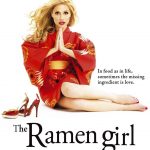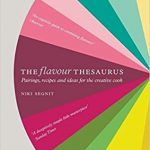Home » Media (Page 2)
Category Archives: Media
Babette’s Feast Review
Babettes gæstebud (1986)

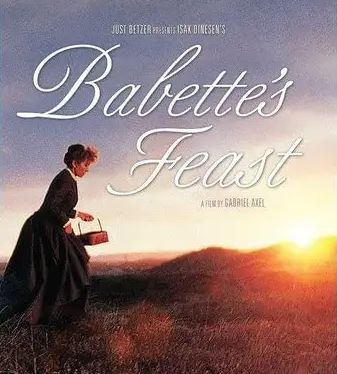
Director: Gabriel Axel
Gastronomic Consultant: Jan Pedersen
Country: Denmark
Cuisine: Danish, French
Film Rating: 7/10
Foodie Rating: 4/10 (first half) 9/10 (conclusion)
Initially there is a touch of confusion: You are half an hour into Babette’s Feast and the eponymous Babette (Stéphane Audran), a housemaid for two elderly sisters Filippa (Bodil Kjer) & Martine (Birgitte Federspiel), daughters of the philanthropic pastor, has briefly popped into a dining room full of parishioners from the small coastal village in Jutland, Denmark, but has nothing appetising to serve.
A refugee from France, Babette has joined the household after being sent there by family friend Achille Papin (Jean-Philippe Lafont), who had taken a fancy to one of the sisters many years ago while teaching her to sing. The letter accompanying Babette indicates that ‘she can cook’ and so the kindly sisters take her in; she resides in the house working as the housemaid in exchange for lodging and food. She has to learn to prepare local dishes as well as speak Danish in order to fulfil her new role.
Ale bread soup is the first delicacy she is taught to cook – a spoon from a bowl consumed dark-brown mash of stale bread and…. ale. And so she continues to produce such bland culinary fare, for prayer and song accompany the meals that are served to the sisters and parishioners in this tiny community, although she is adept at purchasing the best quality produce and will not accept overpriced goods..
Babette does, however, hold some lottery cards back in France and her friend there ensures her continued participation. Over a dozen years after leaving her home country she wins 10,000 Francs. With the money arriving in time to commemorate what would have been the one hundredth birthday of the now deceased pastor, Babette decides to celebrate with a proper dinner. It turns out to be a feast but the villagers don’t want to acknowledge any sinful depravity associated with the celebration. All through her time washing salted fish and making ale bread soup in Jutland, Babette has had a hankering for home cuisine so splashes her new cash on procuring the ingredients to create and serve a lavish multiple course gastronomic extravaganza.
This is a film about an virtuous community, where the sisters have led a life of worship and charity, where frivolity is shunned and enjoyment of food considered to be self-indulgent. The religious group, whilst still gathering together, bicker amongst each other – their lives of austerity leading to petty squabbles. Babette conforms with the expectations of the society that has given her refuge but clearly yearns for her former life.
The feast affords her the opportunity to retain a flavour – if you will – of the culinary joys that she used to know and enjoy. The dinner includes Potage à la Tortue, blinis (although the ingredients, like much in the feast are imported so no local fish roe here, just the beluga), a salad course, Cailles en Sarcophage and a variety of fruits, cheeses. And of course there is a very good reason as to why this is such a special occasion.
Babette’s Feast is a gentle film, underplayed throughout, and its primary message is that just a soupçon of decadence and indulgence, hell, even a little gluttony, does you good.

Film Review: The God of Cookery (食神 1996)


God of Cookery
Director: Stephen Chow Sing Chi (周星馳)
Country: Hong Kong
Cuisine: Chinese / Cantonese
Film Rating 6/10
Foodie Rating 5/10
The world of food is tough in more ways than one. The bourgeois rich insist on the distinctive, the unique and the best and are willing to pay for it, whilst the poor survive on what they can get. Then there is celebrity and publicity with competitions which ensure that skilled chefs become either rich or rejected largely because of trends and interpretations of the quality of the food, style, taste or even the performance of its chef. Self-declared God of Cookery (Stephen Chow) is extravagant, talented and very rich (partly the result of a dubious business empire which aggrandises his personality and food), able to detect the slightest of alterations in the quality of dishes created, savage in his criticisms (although accurate in detail) and a proficient user of culinary implements as he wields his chopper with remarkable ability. Martial arts meet culinary arts. Bull Tong (Vincent Kok) is his rival and a televised competition chaired by The Princess of Taste (Nancy Sit) leads to the vivacious cooking deity rejected to the streets where his need to make good food in a manner that satisfies his distinctive palate is put to the test. He comes across street-food maker Turkey (Karen Mok) who has surprising skills with her unique dishes (at a reasonable price) of pissing shrimp and beef balls. (You read that right!) With rival businesses, gangland trouble and a desire to return to the limelight with a restored reputation God of Cookery joins up with Turkey to make the ultimate in culinary perfection, the pissing beef ball.
The world of Stephen Chow Sing Chi (周星馳) is one that is filled with comedy (from slapstick, hilarious, offensive, inappropriate or just genius) but also physical prowess that mixes martial arts with comedy in a way that is distinctly different than the Buster Keaton style stunts of Jackie Chan. And so we have football in Shaolin Soccer (probably his best known film outside Hong Kong along with Kung-Fu Hustle) and also a lot of social commentary that addresses class and community in an often offensive manner which becomes funny when you understand the context and tone in which it is delivered. But here The God of Cookery does tackle social issues, media manipulation, business riches impeding the populace and criminal fraternities being comparable in their own way and yet – it’s a foodie film. With martial arts. Call it Kung-Food if you will. So here we have chopping and mincing as swift and accurate as you can imagine, ingredients juggled into place, eggs cracked open and whisked with speed and dexterity, meatballs filled with alarming accuracy. Oh, and deadly chopsticks as well as woks and cooking implements of all varieties that add to the mayhem. Sometimes the perpetrators of evil are served up as if they were cooked dishes themselves. The contrast between posh restaurants and street food are depicted in their clientele, their production and, of course, their means of depicting kung-food mayhem and gastronomic expertise. The similarities of the elite and the normal are shown to be different in how society reacts to them but in the world of The God of Cookery this is irrelevant as it focuses on the joy of great food, whatever the background of its creator. Just don’t forget to remove the excrement from the entrails dishes. Good advice there. May not be to everyone’s taste (unlike the pissing beef balls, of course) but still kung-food madness with socially underlined messaging that packs a punch – often between preparing ingredients.

Film Review: Eat Drink Man Woman

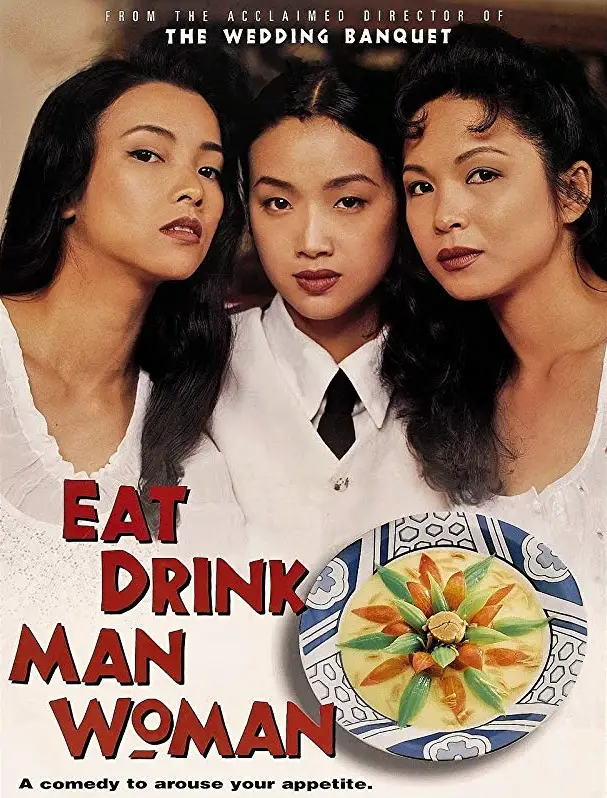
Writer/Director:Ang Lee
Country: Taiwan
Cuisine: Chinese
Film Rating 9/10
Foodie Rating 10/10
The only problem with this foodophile classic is its title: it should be Eat Drink Man Women as the relationships centre on protagonist Chu (Sihung Lung), his three daughters as well as his friend, her mother and her daughter. Chu is a former chef and the story revolves around the women who define his life following his retirement and widowhood examining their relations with him and each other, all within the context of a great deal of amazing food. His daughters have complicated lives but they retain a sense of duty to their father, so every week the family gather for an auspicious Sunday feast where Chu creates the most delicious meals as they have to discuss their lives, their prospects and their woes. Jia-Chien (Chien-Lien Wu), despite her business acumen and success as an airline manager, always wanted to develop her own cooking abilities. Jia-Jen (Kuei-Mei Yang) has had relationship issues of her own and has converted to Christianity while the youngest sister Jia-Ning (Yu-Wen Wang) is still a student, seeking qualifications and dealing with both friends and boyfriends as they come and go. And then there’s Chu’s friendship with Liang Jin-Rong (Sylvia Chang). Shocked that her daughter goes to school with less than top-quality food in her lunchbox, he instigates a secret arrangement with the young girl whereby he replaces her lunchbox with one filled with his own exquisite concoctions, eating the original food so as not to waste the somewhat inferior cooking. This creates a lot of cultural cross-generation food empathy as these exceptional lunches pique the interest and enthusiasm of her classmates who later provide Chu with orders for particular dishes from his extensive repertoire.
When watching Eat Drink Man Woman it is advisable to do so on a full stomach. The opening sequence alone will have you salivating at the delicious dishes on offer as Chu prepares Sunday lunch for his daughters. This is not a standard meal that’s simply been thrown together, the care and attention he puts into each and every dish reflects his way of showing his daughters how much he cares for them; the finished feast far too much for the family to consume. His daughters have grown up to be critical of his culinary skills, noting that he may not have followed the recipe precisely and are open in their feedback, certain of their judgement in his abilities. But his culinary expertise is his way of maintaining the family within a home where food is the centre of everything. The Sunday lunch also gives the whole family the opportunity to make announcements about their lives and their plans for the future, including the occasional bombshell. The dinner table provides the focal point for family interactions. Director Lee then cuts to specific scenes that delve into the individual stories of this complicated family.
Chu’s is a practical kitchen – a chef’s kitchen: white tiled, with a seriously impressive array of knives, cooking implements and vessels, all of which have been well used over the years. Much of his food is so fresh some of it is still alive – fish writhing in pots – just moments before preparation begins. Chu is not squeamish – he knows exactly where his food comes from and how to prepare it. Sizzle, steam, fizz, fry, boil – all the techniques of classic Chinese cookery are on show. The dishes are many and varied – the portions far too large for the family of four to devour – but every Sunday lunch is a sumptuous feast with plenty of leftovers for the week ahead.
Eat Drink Man Woman places food as a central part of this story of a complicated family living complicated lives. As anyone who has been overfed by a kindly relative knows, the over-riding message from Eat Drink Man Woman is that, no matter how complex and difficult life can be, food is not simply nourishment, it represents love.
You can buy the DVD (or the NTSC version) or the Ang Lee box set trilogy which also contains more of his foodie films, The Wedding Banquet and Pushing Hands.
If you click the link and decide to make a purchase we will earn a small commission, at no cost to you, which helps towards running this site.

The Flavour Thesaurus Review
by Niki Segnit
Most cookery books have a picture of beautifully presented delicious food on the cover to tantalise the tastebuds. The Flavour Thesaurus by Niki Segnit is just as enticing but from an entirely different perspective.
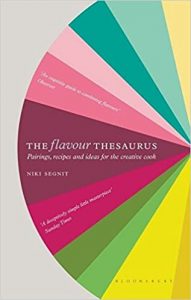
It’s a large colour wheel or, more precisely, half a colour wheel that adorns the front cover. Fear not, if you open to the very first page, the full colour wheel is revealed in all its glory and immediately the purpose of The Flavour Thesaurus becomes clear.
The book’s aim is to demonstrate how different flavours can complement each other. So the colour wheel represents a number of flavours which are divided into particular categories. Meaty, cheesy, marine are straightforward definitions, more descriptive definitions include earthy, mustardy, spicy, woodland. Fruity is further split so that you can fresh, floral or creamy fruity. Then each category has sub-categories which represent the ingredients’ flavours. So meaty comprises: chicken, pork, black pudding, liver, beef, lamb whereas creamy fruity has: banana, melon, apricot, peach, coconut, mango.
And that’s just the first page. After a brief introduction to the purpose of the project, Segnit then launches straight into the thesaurus element. Each flavour category has a chapter and each ingredient within that category its own section. Where the ingredient complements another flavour in the thesaurus Segnit then writes up a paragraph explaining how the particular flavours complement each other with maybe an interesting anecdote thrown in and a high-level but perfectly functional recipe to get your creative cookery juices flowing. These also reference chefs, cooks and food critics’ recipes and opinions (sometimes conflicting) on the success – or not – of the combinations. And these recipes aren’t restricted to western palettes the flavours are derived from all over the world.
Some of the combinations are, of course, tried and tested classics, others more surprising. Who knew, for example, that the Russian Tsar’s children tucked into caviar and mashed banana for breakfast? Or that chocolate might complement cauliflower? Or that blueberries work well with mushrooms?
As well as being a cookery book that is fun simply to read, it also encourages you to experiment. Open the store cupboard, have a poke inside and see what ingredients are there to put together. Who knows what flavour combination you might discover?
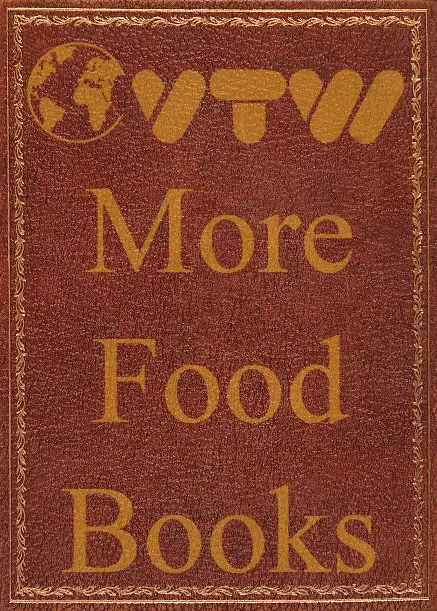
Please note that this post contains affiliate links. If you click the link and decide to make a purchase we will earn a small commission, at no cost to you, which helps towards running this site.



